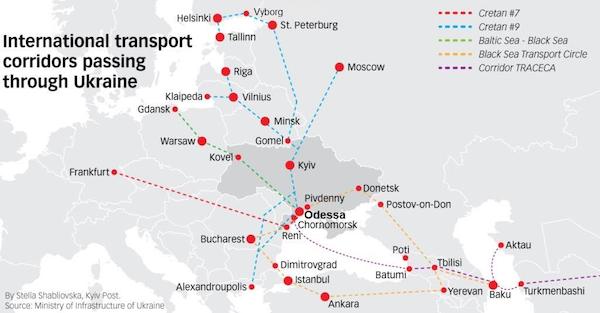Ukraine and the Black Sea region play a critical role in the global grain markets. As most are aware, Russia currently has over 100,000 troops massed near Ukraine’s borders and fears of a looming invasion have been ongoing for several months. The conflict is a major point of concern for global agriculture, as an interruption of grain and other ag product flows out of Ukraine and the Black Sea region could have major, widespread ripple effects. Below is a deeper look at what’s at stake as far as global agriculture:
Corn and Wheat – Ukraine is projected to be the world’s third-largest exporter of corn and fourth-largest export of wheat in 2021/22. Russia is the world’s top wheat exporter and forecast to be the fourth biggest corn exporter. Combined, the two account for almost 19% of global corn exports and nearly 29% of global wheat exports.
Ukraine is expected to export over 24 million metric tons of wheat this season, of which about 17 million has shipped as of the first week of February. Corn exports are pegged at 33.5 million metric tons, with just over 14 million already shipped.
USDA forecasts Russia’s 21/22 wheat exports at 35 million metric tons with roughly 23 million shipped through January 20, according to the most recent Russia trade numbers. Corn exports are estimated at just 4.5 million metric tons with a little over 1 million shipped.
Ukraine’s key wheat regions and some of its most productive corn areas are both close Russia as well as territory occupied by Russian troops. The Luhansk and Donetsk regions in eastern Ukraine are actually held by separatists that Russia has been supporting and arming for nearly 8 years. South of that, the Crimean peninsula is under total Russian control after being annexed in 2014. When Russia invaded Ukraine during that period, wheat prices shot up by about +25% in two months. Corn also rallied but not as much. However, Ukraine’s share of the global corn export market has increased by almost +63% since then.
Russia’s exports could also be threatened by Western sanctions as most commodity and other global transactions are conducted in U.S. dollars. Analysts say that in a worst-case scenario, the West could ban Russia from using the U.S. dollar, the euro, or SWIFT (Society for Worldwide Interbank Financial Telecommunications), the global communication system linking financial institutions. This would make it difficult for Russian exporters to participate in the global market, though not impossible.
Ports – Ukraine, Russia, Kazakhstan, and Romania all ship grain from ports in the Black Sea. Most of Ukraine’s grain exports ship from the Black Sea port cities of Mykolaiv and Odessa, which lie west of the Crimean Peninsula. Some analysts worry that Russia could push westward into Ukraine, cutting off access to the ports and leaving the rest of Ukraine landlocked. This could potentially disrupt shipments from other Black Sea shippers as well. There is also the worry that an armed conflict could damage port infrastructure and paralyze shipments out of the Black Sea altogether. (Sources: USDA, Argus, Bloomberg)








